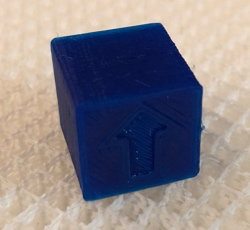Getting Started with 3D printing
You are entering the world of 3D Printing while it is still a very young technology. There are more and more printers you can have up an running almost immediately. Others who like the challenge, can still build their own, but it keeps getting easier. This is like the early days of computers, when people had to work a little harder to get started, but the results are almost magical.
This is a “learn as you go” process, that does not require more than watching a couple videos to have the confidence to attempt a first print.
Where do I start?
Our experts learned the hard way that a quick orientation can make a huge difference in the success of your first 3D prints.
Learning about your printer
3D Printer Anatomy
Parts of a printerFollow along in your printer manual to get a better overview of all the parts of your printer
I Got a 3D printer for Christmas
Joel from 3D Printing Nerd waxes nostalgic about his first 3D printer and how that led to his new career running a YouTube channel
Top 10 things to know for Ender 3
Some tips from The Artful Family on making those first few prints go smoothly. Though he is using the Ender 3, the ideas apply to pretty much any printer
5 Critical 3D Printer Settings before you start Slicing!
Angus from Makers Muse on setting up your slicer to help those first few prints go smoothly. A complement to the above video
Filament storage and Loading
Angus from Makers Muse talks about filament loading, storage and handling.
Basic Workflow

First timers often print the sample file provided with your 3D Printer. This gives you a chance to learn how to turn on your machine, set the temperatures and to load the filament in your machine following the manufacturer's instructions. Sites like Thingiverse have thousands of files to choose what you wish to print next. Scan through the fotos until you find something interesting, then download the .stl file. (.stl is a file format most commonly for models before you customize them for your specific printer. See the Glossary for detailed definitions of thest terms.) . We have some recommended first prints further down on this page. Advice from our experts on picking 3D models that will print successfully for those those new to 3D Printing.
Slicers convert 3D Model files (.stl) into the G-Code (.gcode) files that contain the instructions for the printer. You can download slicer software for free, such as Slic3r or Cura. The slicer will load in a .stl file, then you can choose the printer and filaments. The myriad of other settings available can wait and you can learn about these as you need them.
Some users prefer transferring files to the 3D printer on an SD card, while others will send it directly using a program such as Pronterface Your 3D Printer Manual will explain what methods work with your printer.
Follow the instructions for your printer for loading the filament and getting the print started. Especially during your first print, you won't need the advice to check in on your printer's progress as it builds your model before your eyes.
Recommended first prints
Calibration cubes are helpful to print to test the accuracy of your printer. Use the calipers to make sure that the print measures 20mm on a side. If it doesn't, consult the your printers manual for ways to correct the problem. There are other more complex calibration objects up on Thingiverse that can help test the performance of your printer, slicer and filament.

The venerable 3D Benchy is a small simple boat model that has commonly been used to showcase printers and filaments for several years. Often used as a test print to debug printing issues e.g. "Print me a benchy and lets see how it looks". Its so popular it has its own website.

Lithophanes
Lithophanes are an easy first project that you can show off to friends. Upload any .jpg photo and get an .stl file ready for your slicer. These files are very easy for first time prints since they are quick to print and also fit the guidelines. A lithophane is printed in layers to make a very detailed image when placed in front of a light -- Karen
A good guide for adjusting your printer settings litho-print-settings
Websites with lithophane tools:
Angus from Makers Muse walks you through the process of finding and modifying a 3D model of a holder for USB & SD cards, using Thingiverse and TinkerCAD
Tools you should have: Beginner
Software
More information on obtaining and using the software mentioned above can be found on our tutorials page.